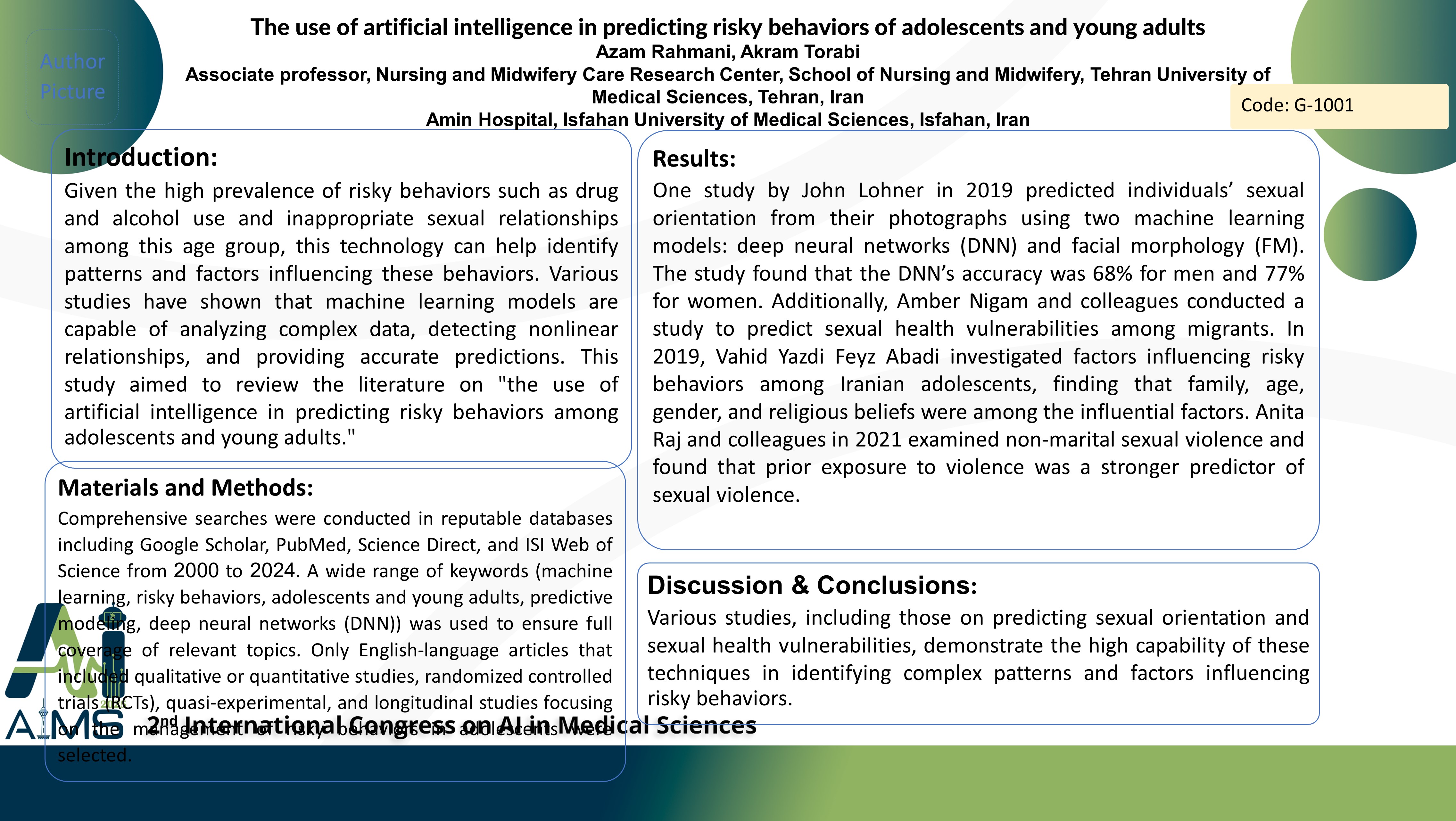استفاده از هوش مصنوعی در پیشبینی رفتارهای پرخطر نوجوانان و جوانان
کد: G-1144
نویسندگان: Azam Rahmani * ℗, Akram Torabi
زمان بندی: زمان بندی نشده!
برچسب: سیستم های تصمیم یار بالینی
دانلود: دانلود پوستر
خلاصه مقاله:
خلاصه مقاله
Introduction: Given the high prevalence of risky behaviors such as drug and alcohol use and inappropriate sexual relationships among this age group, this technology can help identify patterns and factors influencing these behaviors. Various studies have shown that machine learning models are capable of analyzing complex data, detecting nonlinear relationships, and providing accurate predictions. This study aimed to review the literature on "the use of artificial intelligence in predicting risky behaviors among adolescents and young adults." Methods: Comprehensive searches were conducted in reputable databases including Google Scholar, PubMed, Science Direct, and ISI Web of Science from 2000 to 2024. A wide range of keywords (machine learning, risky behaviors, adolescents and young adults, predictive modeling, deep neural networks (DNN)) was used to ensure full coverage of relevant topics. Only English-language articles that included qualitative or quantitative studies, randomized controlled trials (RCTs), quasi-experimental, and longitudinal studies focusing on the management of risky behaviors in adolescents were selected. Results: One study by John Lohner in 2019 predicted individuals’ sexual orientation from their photographs using two machine learning models: deep neural networks (DNN) and facial morphology (FM). The study found that the DNN’s accuracy was 68% for men and 77% for women. Additionally, Amber Nigam and colleagues conducted a study to predict sexual health vulnerabilities among migrants. In 2019, Vahid Yazdi Feyz Abadi investigated factors influencing risky behaviors among Iranian adolescents, finding that family, age, gender, and religious beliefs were among the influential factors. Anita Raj and colleagues in 2021 examined non-marital sexual violence and found that prior exposure to violence was a stronger predictor of sexual violence. Conclusion: Various studies, including those on predicting sexual orientation and sexual health vulnerabilities, demonstrate the high capability of these techniques in identifying complex patterns and factors influencing risky behaviors.
کلمات کلیدی
Machine Learning, Risky Behaviors, Adolescents
